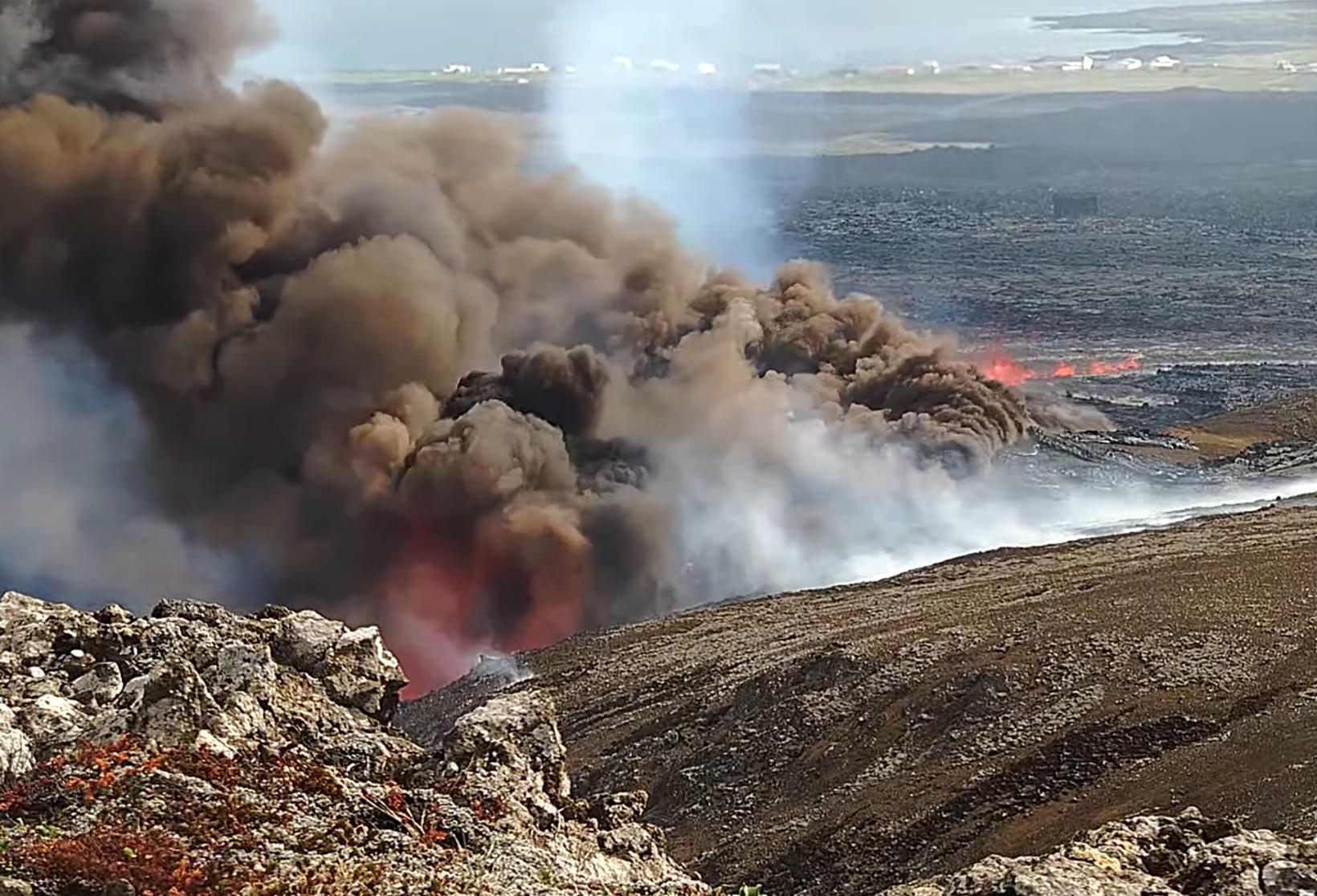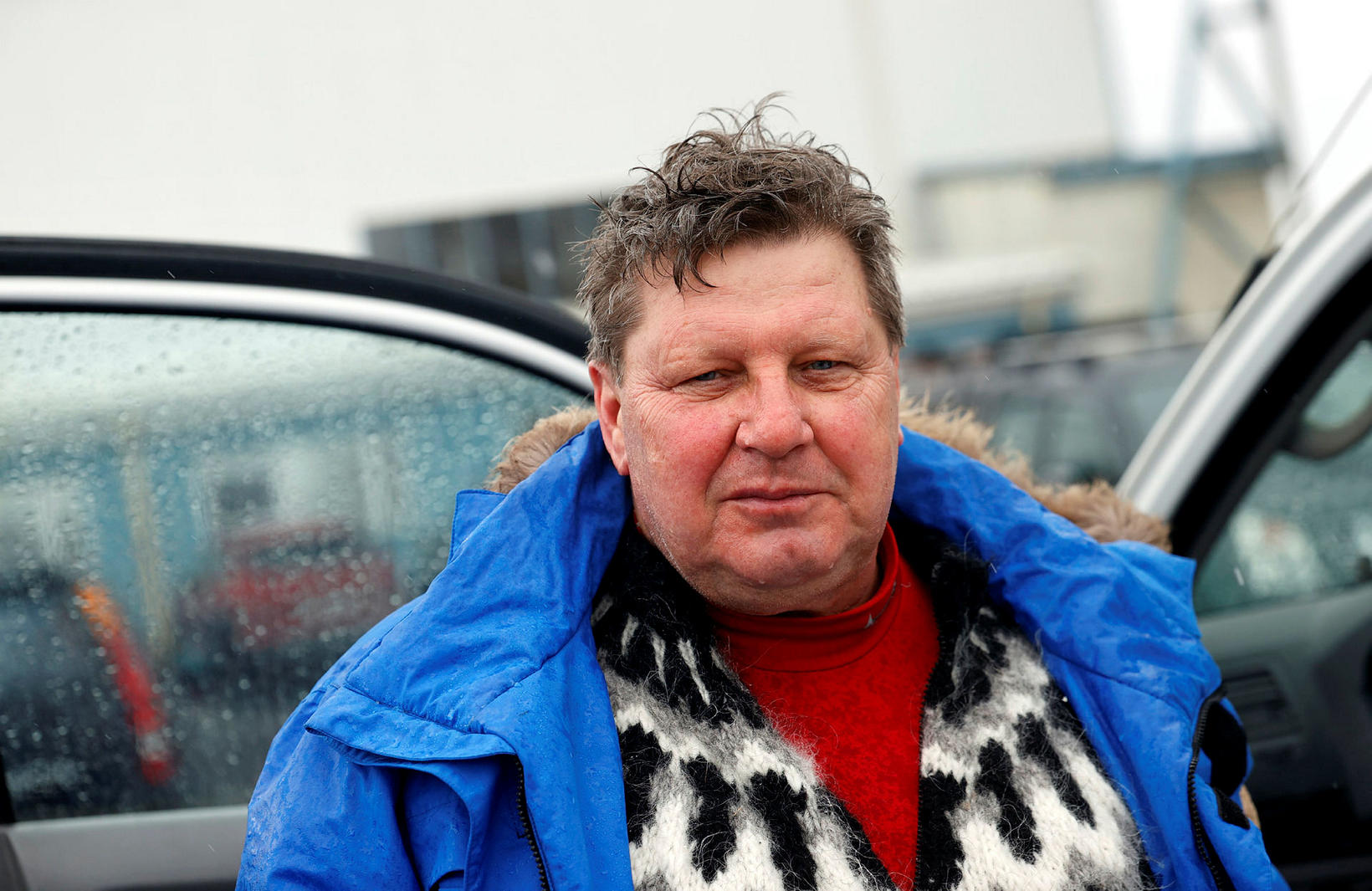Explosive eruption could be a sign of a shortlived eruption
A black and brown plume rose from the southern part of the fissure at Mt Hagafell yesterday, and powerful explosions could be seen from time to time.
Here below is a video of when the explosions started.
The explosive activity at the southern end of the fissure at Mt Hagafell could mean that the activity in the volcanic eruption will soon begin to decrease. The explosive eruption could in turn be accompanied by a pyroclastic fall.
Black and brown smoke began rising from the southern part of the fissure just before 4 pm yesterday. Severe explosions were observed there occasionally.
Volcanologist Þorvaldur Þórðarson says it is almost certain that an explosive eruption has begun at the southern end.
“This is just explosive activity. That is what this is,” Þórðarson tells us. An eruption is created by a combination of magma and groundwater. The water then boils and expands.
But what does that mean for the progress of the eruption? “It could be that there would be only explosive activity at the southern end and the lava flow would stop,” Þórðarson says.
Þorvaldur Þórðarson, professor of volcanology at the University of Iceland. Photo/Eggert Jóhannesson
Lava flows extremely fast
A volcanic crater can therefore form around the southern end of the fissure and ash could follow, according to Þórðarson.
“It changes the progress of the eruption and the scenario quite a bit. This lava flow that went south there has naturally moved very fast. It has been flowing about a kilometer per hour,” the volcanic eruption scientist says.
He points out that the eruption is among the most powerful in the current eruption cycle, even more powerful than the eruption from December.
A record amount of magma, up to 20 million cubic meters, had accumulated in a magma chamber underneath Svartsengi, but Þórðarson still expects the eruption to come to a halt soon, as it began with such force that the magma chamber must drain very quickly.
Will the eruption be a full explosive eruption?
The explosive activity could also be a sign that volcanic activity is starting to decline.
“I expect the eruption to fall in the next few hours, and that may well be the reason for the explosive activity at the southern end,” he says.
He points out that when the flow of lava from the crater is reduced, the path to the eruption can be easier for groundwater to flow into the eruption channel.
“This could be an indication that you are starting to reduce the flow of magma up this magma channel.”
Gas pollution blows southeastwards
“Fortunately, the wind is still standing so the smoke has been moving mostly southeast. But everything under the smoke can be subjected to a volcanic ash fall, as can the fact that the magma is congested in this magma and it’s raining from it. That rain can be quite acidic,” he says.
Þórðarson finds many things interesting about this eruption, especially that it started at the same place as the last eruptions, except for the January eruption.
“It is clear that the eruption channel [from the magma chamber in Svartsengi] lies there, underneath Svartsengi and right up where the fissure is east of Mt Stóra-Skógsfell,” he says.












